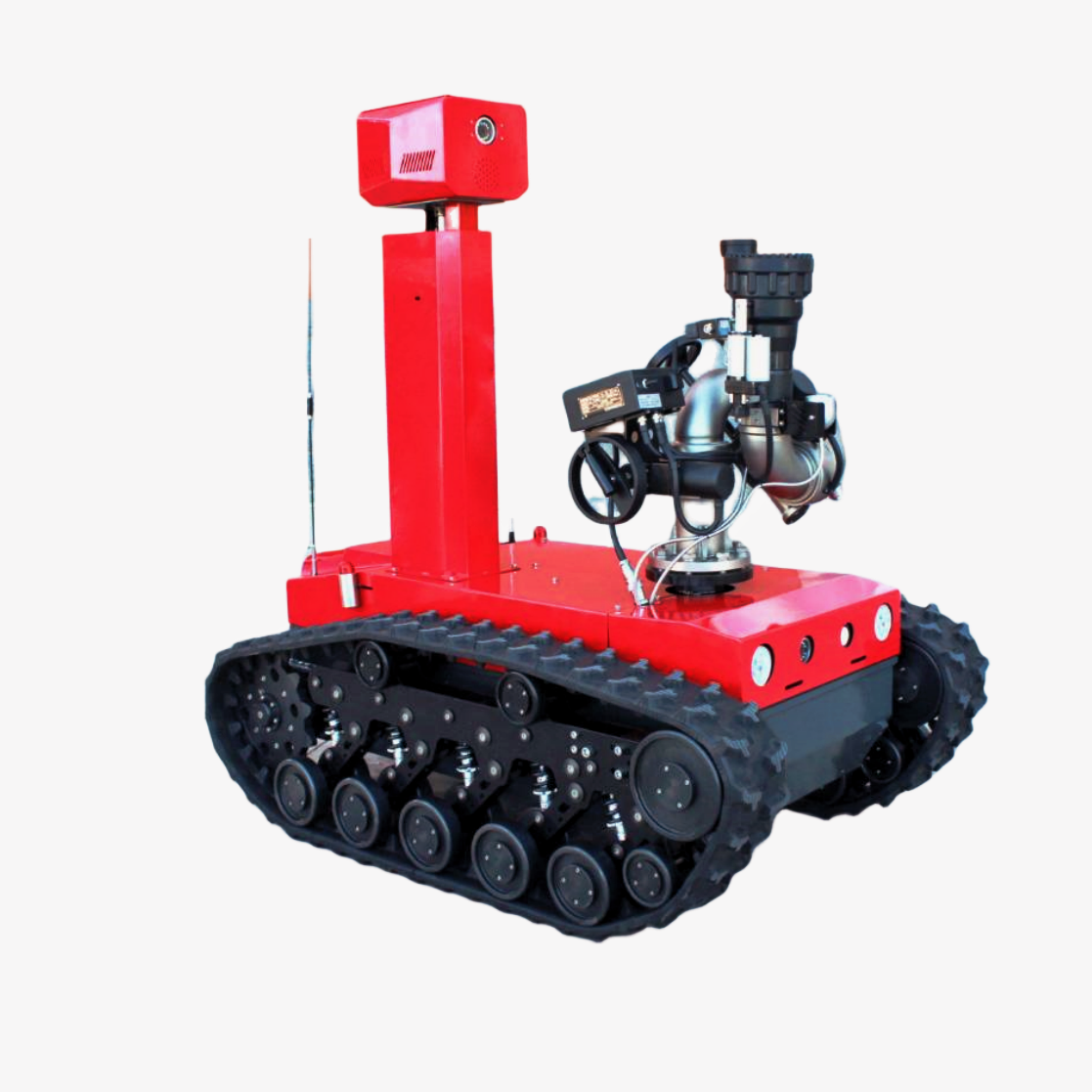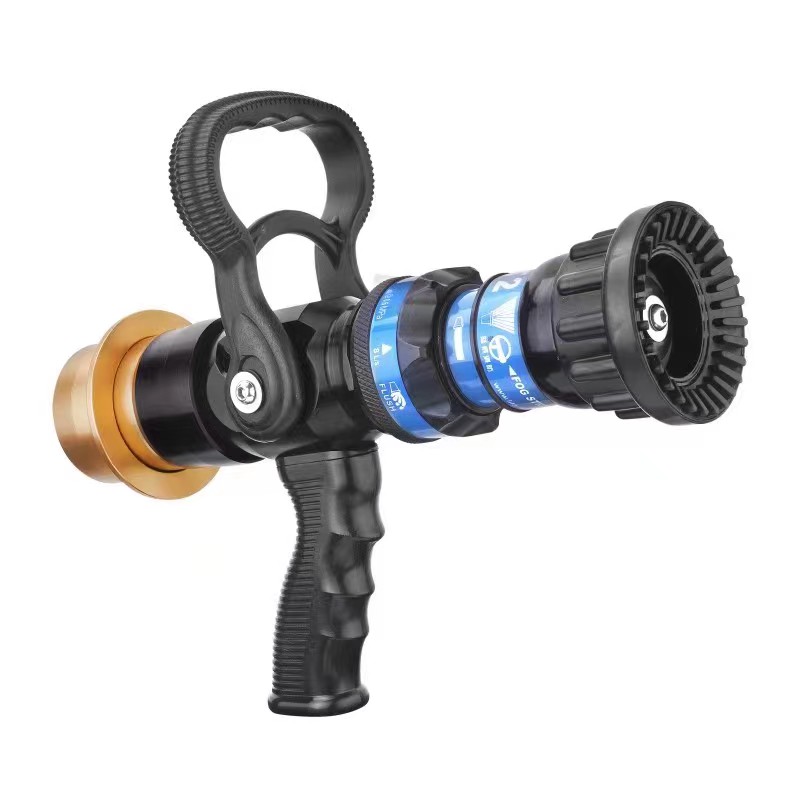The Multifunctional Fire Robot Fire Tank (hereafter referred to as the “Fire Tank”) is an advanced piece of firefighting equipment designed to tackle blazes in high-risk and inaccessible environments. This robotic solution brings forth a new era in firefighting technology by combining mobility, durability, and versatility. Below is a conceptual introduction to the Fire Tank, highlighting its key features and capabilities:
Core Features:
- Robotic Mobility: The Fire Tank is equipped with robust treads or wheels, enabling it to traverse challenging terrains, including debris-laden floors, steep inclines, and rugged outdoor landscapes.
- Remote Operation: Operated by a trained firefighter from a safe distance, the Fire Tank is controlled via a secure wireless connection, equipped with real-time video and sensor data feedback, ensuring operators maintain situational awareness while keeping them away from the immediate dangers.
- High-Pressure Fire Suppression: It is fitted with a high-capacity, high-pressure water cannon capable of dousing flames from a considerable distance. The cannon can be complemented with foam or other extinguishing agents to tackle various fire classes.
- Thermal Imaging: Advanced thermal imaging cameras allow the Fire Tank to locate hotspots and victims in low-visibility conditions, ensuring precise water cannon targeting and aiding in search and rescue operations.
- Fire Resistance: Constructed with heat-resistant materials and protective cooling systems, the Fire Tank can endure extreme temperatures for prolonged periods, making it ideal for fighting fires in industrial settings, chemical plants, or during hazardous material incidents.
- Payload Capacity: It can carry additional firefighting equipment, such as hoses, extinguishers, or even a set of tools useful for search and rescue tasks, increasing its versatility in emergency scenarios.
- Obstacle Navigation: The Fire Tank is outfitted with sensors and AI-driven systems for obstacle detection and navigation to avoid collision and ensure smooth operation amidst chaotic environments.
- Autonomous Functions: With pre-programmed capabilities, the Fire Tank can execute certain tasks autonomously, such as patrolling an area or following a predetermined path to target fires.
- Communication Hub: It can act as a communication relay between the incident commander and other firefighting resources onsite, especially in areas where communication is typically compromised.
- Interoperability: Designed to work in tandem with human firefighters and other robotic systems, the Fire Tank seamlessly integrates into existing firefighting strategies.
Potential Applications:
- High-rise building fires where elevation and access are challenging.
- Chemical and nuclear plant emergencies where a human presence could be fatal.
- Wildland fires, covering extensive areas rapidly and with heavy payloads.
- Tunnels and underground facilities where ventilation issues compound fire risks.
Benefits:
- Increased Safety: The Fire Tank keeps firefighters out of harm’s way while still allowing them to perform critical suppression and rescue activities.
- Enhanced Effectiveness: By combining strength, endurance, and technology, the Fire Tank can fight fires more effectively and efficiently than traditional methods.
- Reduced Response Time: Its ability to quickly enter and assess a situation means faster response and action, which can be vital in saving lives and property.
Expanded Capabilities:
- Environmental Monitoring: The Fire Tank is embedded with a suite of sensors to detect harmful gases, airborne particulates, and other hazardous environmental conditions, warning firefighters of potential dangers well in advance.
- Extended Operation Time: Powered by high-capacity batteries or hybrid power systems, the Fire Tank is capable of operating for extended periods, essential for prolonged firefighting operations where time is critical.
- Rescue Operations: Apart from its firefighting prowess, the Fire Tank can aid in rescue operations, using its strength and tools to remove debris, breach walls, or even transport injured individuals to safety.
- All-Weather Capability: Designed to function under various environmental conditions, including heavy rain, snow, and extreme heat, ensuring its dependability across different climates and seasons.
- Durability and Maintenance: The Fire Tank’s modular design allows for quick repair and replacement of parts, ensuring minimal downtime and reliable service during back-to-back deployments.
- Customization and Upgrades: The platform’s versatility permits customization, allowing fire departments to equip the Fire Tank with specialized gear for unique scenarios, ensuring a future-proof investment.
Integration with Smart Firefighting:
- Real-time Data Analytics: Integration with fire department command systems to provide real-time data analysis and predictive modeling, aiding in strategic planning and resource allocation.
- Machine Learning: The incorporation of machine learning algorithms allows the Fire Tank to improve its performance and decision-making capabilities over time, learning from each incident to optimize future responses.
- Drone Collaboration: The ability to coordinate with aerial drones for scouting and assessing, providing a comprehensive three-dimensional situational overview and enabling the Fire Tank to operate with even greater precision.
Training and Support:
- Simulator Training Programs: Firefighters can train extensively with simulator programs specifically designed for the Fire Tank, ensuring proficiency in operating the robot without risking equipment or personnel.
- Technical Support and Field Services: The manufacturer provides ongoing technical support and field services to ensure the Fire Tank remains operational at all times, with regular updates to software and firmware keeping the robot in line with the latest standards.
Community Outreach and Education:
- Public Demonstrations: Demonstrations and educational programs can foster community engagement, illustrating the capabilities and benefits of the Fire Tank to the public and local businesses, promoting transparency, and building trust.
- Disaster Preparedness Initiatives: The Fire Tank can serve as a cornerstone for local and regional disaster preparedness initiatives, highlighting the importance of advanced technology in mitigating risk and managing emergency situations.
The introduction of the Fire Tank into modern fire departments represents a significant leap forward in emergency response technology. By leveraging its multifunctional capabilities, emergency response teams are better equipped to tackle challenging situations while minimizing risk to human life.








